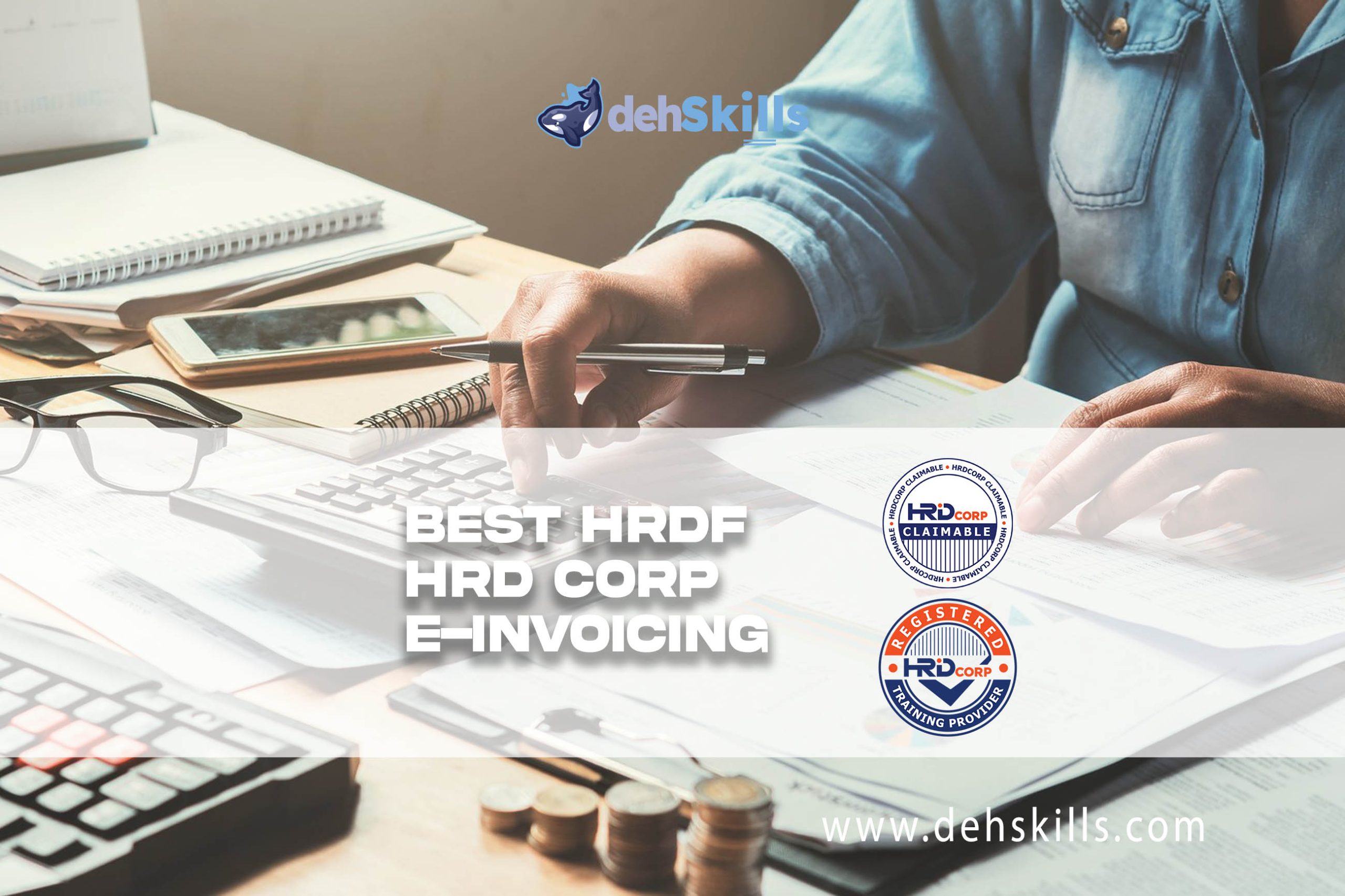
- This event has passed.
HRDF HRDC HRD Corp Claimable e-Invoicing Training
September 25, 2024 @ 9:00 am - 5:00 pm
RM1200
HRDF HRDC HRD Corp Claimable e-Invoicing Training
100% HRDF / HRC Corp Claimable e-Invoicing Training
25 September 2024 – 9am till 5pm
Face-to-Face Classroom
Nations are progressively acknowledging the necessity of e-invoicing because of its numerous advantages that correspond with the developing digital environment of economic activities. E-invoicing, also known as electronic invoicing, is a method of sending and receiving invoices by electronic means, hence reducing the requirement for traditional paper-based procedures. Malaysian employers may require e-invoicing for the following significant reasons:
Increased effectiveness
E-invoicing simplifies the process of billing and receiving payment, resulting in a decrease in the amount of time and energy needed to handle invoices. It automates the process of entering data, minimizing mistakes and accelerating the acceptance of invoices. Enhancing this efficiency can greatly enhance the management of cash flow and operational productivity.
Decrease in expenses
Adopting e-invoicing allows employers to save expenses related to paper invoicing, such as printing, mailing, and storage. Furthermore, it reduces the costs associated with invoice processing and reconciliation, leading to overall cost reductions for the firm.
Adherence to regulations and legal requirements
Malaysia is transitioning towards a more digital economy, and regulatory authorities may soon require or strongly encourage the use of electronic invoicing (e-invoicing) to enhance transparency and prevent tax evasion. Implementing electronic invoicing guarantees employers’ adherence to existing and forthcoming regulatory mandates, encompassing those pertaining to the Goods and Services Tax (GST) and other tax responsibilities.
Enhanced supplier and customer relationships.
Electronic invoicing expedites the processing of invoices, allowing employers to immediately remunerate their suppliers. This can result in improved supplier connections and potentially more advantageous terms. Issuing bills immediately to clients can improve customer satisfaction and result in speedier payments, hence enhancing cash flow.
Enhanced Security Measures and Comprehensive Audit Trails
E-invoicing provides enhanced security compared to paper invoices, which are susceptible to being lost, stolen, or damaged. Cloud storage offers a secure means of storing digital invoices, with access limits and encryption mechanisms in place to safeguard sensitive data. In addition, e-invoicing offers transparent audit trails, which are extremely helpful for audits and financial assessments.
International competitiveness
In today’s globalized corporate environment, the capacity to transmit and receive invoices electronically is a valuable asset that gives companies a competitive edge. E-invoicing enables seamless interactions with foreign partners by accommodating numerous currencies and languages, and adhering to global invoicing standards.
How E-invoicing systems replace traditional paper-based invoice systems
E-invoicing systems supersede conventional paper-based invoice systems by employing digital transformation, process automation, and integration with financial software. This transition not only simplifies the invoicing process but also results in substantial enhancements in efficiency, precision, and adherence to regulations.
E-invoicing solutions facilitate this shift in the following manner
Digital Creation and Delivery: Conventional Approach: Requires the manual generation of invoices using word processing software or handwritten techniques, and their subsequent delivery through postal services or in person.
E-Invoicing Replacement: Invoices are created electronically using e-invoicing software. They can be transmitted and received instantaneously via the internet, obviating the necessity for physical delivery.
Automation of Invoice Processing Conventional Approach: Involves the manual input of invoice information into accounting or enterprise resource planning (ERP) systems, a laborious procedure that is susceptible to mistakes.
E-Invoicing Replacement: E-invoicing systems have the capability to automatically transfer invoice data into accounting software, hence minimizing the need for manual data entry and the potential for errors that come with it. This automation optimizes the approval process and accelerates payment cycles.
Implementation of uniform formats. Conventional System: Paper invoices exhibit significant variations in structure, hence complicating the tasks of processing and archiving.
E-Invoicing Replacement: E-invoicing typically follows defined formats that simplify the processing, storage, and extraction of data. Standardization also facilitates adherence to regulatory standards and streamlines international transactions.
Improved Monitoring and Transparency, conventional Method: Monitoring the progress of a physical invoice throughout its entire journey, from creation to settlement, is difficult and frequently necessitates additional communication by phone or email.
E-Invoicing Replacement. E-invoicing platforms provide immediate tracking of invoices, allowing users to see the current state of their processing. Senders have the ability to track the status of an invoice, including when it is received, opened, and accepted. This feature helps with the management of cash flow and the ability to predict future financial outcomes. Additionally, there is enhanced security and adherence to regulatory requirements.
Conventional System: Paper invoices are vulnerable to loss, theft, and damage, which creates security risks and compliance difficulties.
The replacement of traditional invoicing with e-invoicing allows for the secure storage of digital invoices in the cloud, utilizing access controls, encryption, and backup systems to enhance data security. E-invoicing solutions enhance compliance with tax regulations and auditing requirements by guaranteeing the integrity and accessibility of invoice records.
Cost Reduction Conventional Approach: Encompasses expenses associated with paper, printing, postage, and storage, together with the labor costs linked to physical handling.
The replacement of E-Invoicing significantly decreases or eliminates the costs associated with the invoicing process by digitizing the entire process. This offers a more cost-effective alternative in the long run.
Complete the form to receive via email an official HRD Corp quote, course outline, trainer profile, trainer TTT, and HRD Corp TP certificate.
Autogenerate Quotation for Course
- Public Class
- On-Site Training
